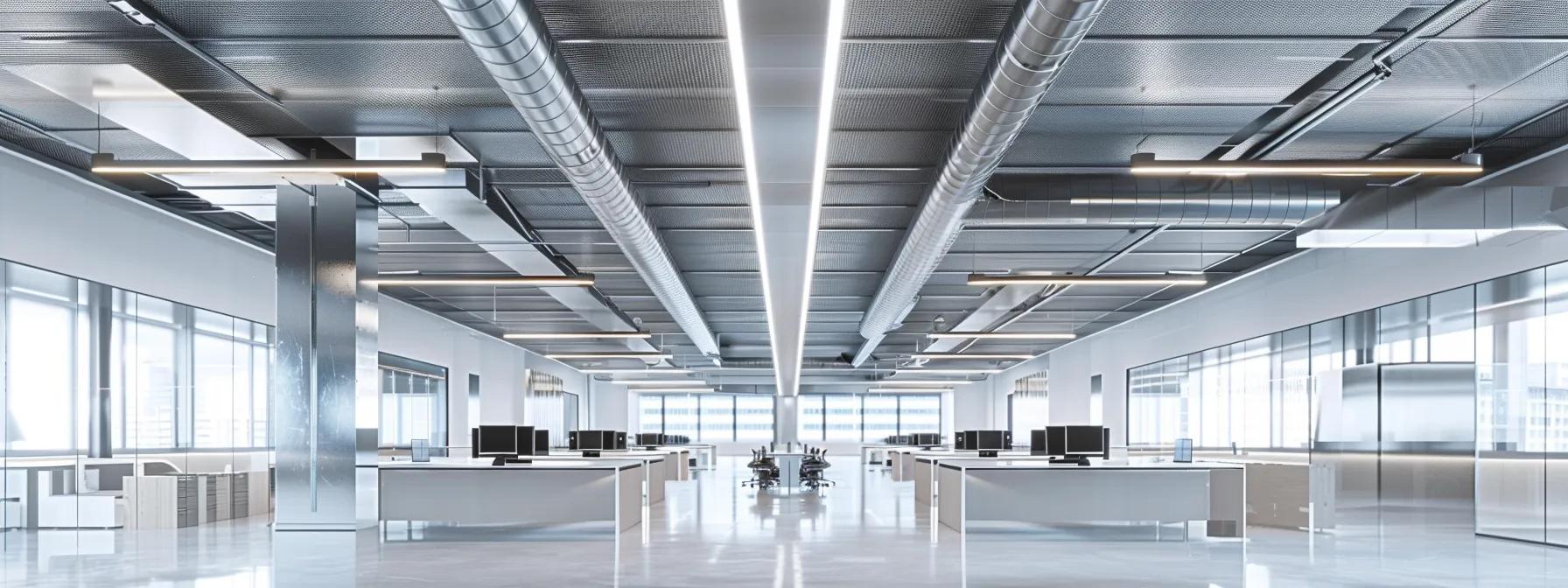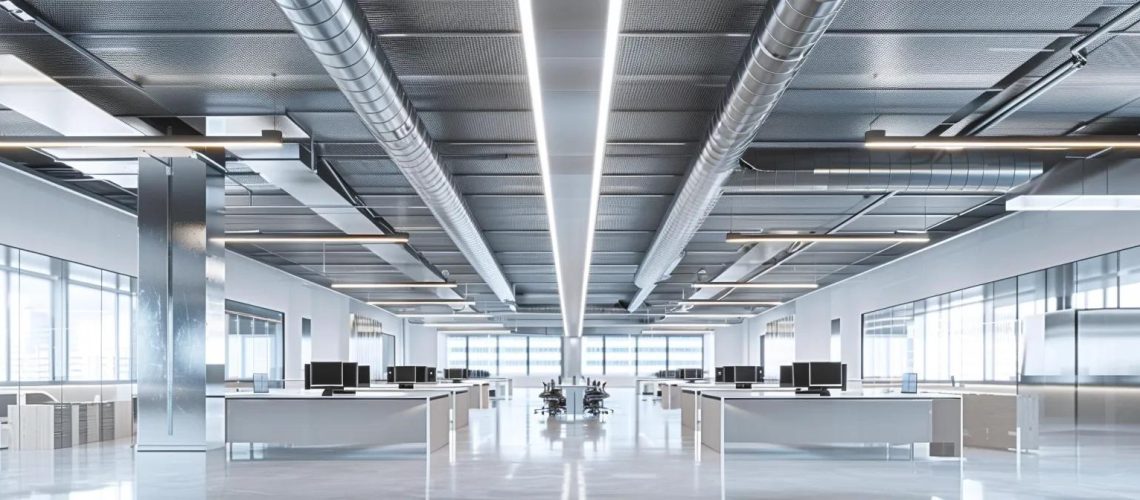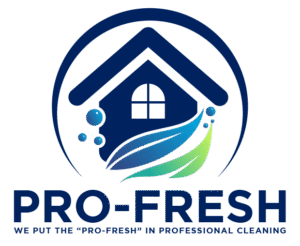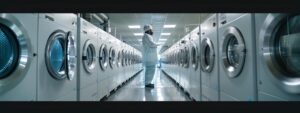
Safe Air Duct Cleaning: How to Ensure a Healthy and Contaminant-Free Indoor Environment
Air duct cleaning is essential for maintaining clean indoor air, enhancing HVAC efficiency, and reducing health risks in both homes and businesses. Over time, dust, mold, allergens, and various contaminants accumulate within ductwork. When these particles become airborne, they can deteriorate air quality and trigger respiratory problems, allergies, and even fire hazards. This guide provides a streamlined, step-by-step overview of safe air duct cleaning—explaining the process, the associated health and energy benefits, the techniques used, and tips for choosing a qualified service provider. It is designed for homeowners, property managers, and HVAC professionals dedicated to superior indoor environments.
The following sections address key questions about safe air duct cleaning. Each section opens with a brief answer and follows with supporting details and insights based on industry best practices.
What Is Safe Air Duct Cleaning and Why Is It Important?
Safe air duct cleaning is the professional removal of dust, allergens, mold, and other contaminants from HVAC ductwork. This process is crucial because it reduces harmful particles in circulation, improves indoor air quality, and boosts HVAC performance—potentially lowering energy bills by reducing system workload. Regular cleaning decreases the risk of respiratory illnesses, allergies, and even fire hazards caused by lint and dust accumulation, ultimately resulting in a healthier living environment and long-term energy savings.
How Does Safe Air Duct Cleaning Improve Indoor Air Quality?
By removing accumulated dust, pollen, and pet dander, safe air duct cleaning prevents these irritants from being recirculated when the HVAC system operates. Professional services use specialized tools to thoroughly vacuum and brush duct interiors, significantly lowering airborne particle levels—studies suggest reductions in dust particles of over 50%. This improvement is particularly important for babies, the elderly, and individuals with asthma or allergies, as cleaner air correlates with fewer health complications.
What Are the Common Contaminants Found in Air Ducts?
Air ducts can harbor a wide range of contaminants, including household dust, pollen, mold spores, bacteria, pet dander, and residues from cleaning chemicals. Without regular maintenance, such pollutants can accumulate and even form microbial biofilms. Additionally, outdoor pollutants—such as smoke and vehicle exhaust—can infiltrate poorly maintained duct systems, exacerbating indoor air quality problems and potentially triggering chronic allergic reactions or respiratory issues.
Who Should Consider Safe Air Duct Cleaning Services?
Homeowners, property managers, and business owners should consider safe air duct cleaning, especially if they are concerned about indoor allergens, system efficiency, or general health hazards. It is highly recommended for those with allergies or respiratory conditions, families with young children, and high-traffic or industrial environments where dust and contaminants accumulate more rapidly. Older HVAC systems or recently renovated properties may also benefit from a professional cleaning to remove construction dust and lingering impurities.
How Is Safe Air Duct Cleaning Performed?
Safe air duct cleaning is achieved through a series of carefully controlled steps: inspection, cleaning, sanitization, and ongoing maintenance. Using state-of-the-art equipment like high-powered vacuums, rotary brushes, and negative pressure systems, professionals remove contaminants without damaging ductwork. The process is executed with strict adherence to safety standards, ensuring that no harmful agents remain in the air system after cleaning.
What Does a Professional Air Duct Inspection Involve?
A professional air duct inspection begins with a visual and technical assessment of the entire HVAC system. Technicians use specialized cameras and tools to detect dust build-up, mold colonies, leaks, or blockages that might be hidden from view. The inspection identifies key problem areas and provides a report with recommendations for cleaning and future maintenance, ensuring a targeted approach that maximizes cleaning efficiency and duct longevity.
Which Cleaning Techniques Ensure Safe and Thorough Air Duct Cleaning?
Multiple techniques are employed to ensure that air ducts are thoroughly cleaned without causing damage. High-efficiency particulate air (HEPA) vacuums capture fine dust, while rotary brushes and compressed air systems help dislodge stubborn particles. Additionally, negative pressure setups are used during cleaning to contain the spread of dislodged contaminants. Using these combined methods, professional cleaners can remove up to 90% of airborne particles, thereby enhancing indoor air quality and system performance.
How Is Sanitization Applied to Prevent Future Contaminants?
After physical cleaning, a sanitization step is applied to the ductwork to inhibit the regrowth of mold, bacteria, and fungi. Environmentally friendly antimicrobial treatments are used so that no harmful chemical residues remain. This sanitization is especially important in humid or previously contaminated areas. Follow-up maintenance schedules are recommended to retain these benefits over the long term and keep ducts free of future contaminants.
What Maintenance Practices Support Long-Term Air Duct Safety?
Long-term air duct safety is maintained by routine practices such as: • Regular filter replacements (ideally every three months)
• Periodic professional inspections
• Observing airflow levels to detect potential blockages
• Prompt remediation of any HVAC anomalies
These simple yet effective practices ensure that systems continue to operate efficiently, reduce energy waste, and maintain healthy indoor air quality over time.
What Are the Health Benefits of Safe House Air Duct Cleaning?
Safe air duct cleaning improves health by reducing the exposure to indoor allergens and airborne irritants. Cleaner ducts mean fewer asthma triggers and a lower risk of respiratory infections, ensuring that the circulating air is less likely to irritate or harm sensitive individuals. This leads to enhanced overall comfort and a healthier environment for all occupants.
How Does Cleaning Reduce Allergens and Respiratory Risks?
By effectively removing dust, pollen, and pet dander, professional cleaning reduces the concentration of allergens in the air. This not only helps prevent respiratory discomfort but also lowers the frequency of asthma attacks and allergic reactions—studies indicate a potential reduction of up to 30% in such episodes. The result is a marked improvement in everyday health and quality of life, particularly for those already vulnerable to respiratory conditions.
Can Safe Air Duct Cleaning Help Prevent Mold-Related Illnesses?
Mold spores, if allowed to proliferate in ductwork, can contribute to chronic respiratory problems and allergic reactions. Through thorough cleaning and subsequent sanitization, the growth of mold is effectively controlled. Preventing mold is especially critical in humid environments. By addressing the moisture sources and regularly cleaning the ducts, the likelihood of mold-related health issues is significantly diminished.
What Role Does Air Duct Cleaning Play in Reducing Indoor Pollutants?
Cleaning air ducts removes a broad spectrum of pollutants—including volatile organic compounds (VOCs), dust, and smoke particles—that can accumulate and degrade air quality. This reduction in pollutants leads to improved respiratory function, fewer headaches, and overall increased comfort. Enhanced indoor air quality can also contribute to long-term health benefits by reducing chronic exposure to harmful contaminants.
How to Choose a Safe Air Duct Cleaning Service Provider?
Selecting the right service provider is paramount to ensuring effective cleaning without compromising safety. Key factors to consider include certifications, technician training, and the use of advanced cleaning technology. A reputable company should be transparent about their methods, provide detailed equipment information, and offer customer satisfaction guarantees. Clear communication and documented quality assurance (such as certification from NADCA) are strong indicators of a reliable service.
Why Is Certification and Expertise Important for Safe Air Duct Cleaning?
Certification and technical expertise are critical because they ensure that cleaning procedures meet strict industry standards. Certified technicians are skilled in handling complex HVAC systems and use proper procedures to avoid damage. Their training helps to ensure that cleaning is both effective and safe, preventing common issues such as chemical overuse or improper disposal of contaminants.
What Questions Should You Ask Before Hiring an Air Duct Cleaner?
Before committing to a service, potential customers should ask: • What specific cleaning methods and equipment are used?
• Do technicians hold relevant certifications (e.g., NADCA)?
• Is antimicrobial treatment part of the process?
• What satisfaction or warranty guarantees are offered?
• How are contaminants disposed of?
These questions help ensure that you choose a provider who meets rigorous standards and can deliver both immediate and long-term benefits.
How Does Advanced Technology Enhance Safe Air Duct Cleaning?
Modern cleaning technology—such as HEPA-filter vacuums, rotary brushes, and real-time inspection cameras—greatly improves the effectiveness of duct cleaning. These tools not only remove even the smallest particles but also help monitor the entire cleaning process to ensure thoroughness. Advanced technology minimizes the risk of damage to the duct system while ensuring that contaminants are captured and contained.
How Much Does Safe Air Duct Cleaning Cost and What Are the Value Factors?
The cost of air duct cleaning depends on factors such as property size, contamination levels, and ductwork complexity. Although prices vary, the benefits—such as improved air quality, energy savings, and health protection—often justify the expense. When evaluating costs, it is important to consider transparent pricing models, service guarantees, and long-term savings from reduced energy and maintenance expenses.
What Influences the Cost of Safe Air Duct Cleaning Services?
Key cost drivers include the square footage of the property, the number of vents, and the degree of contamination present. Properties with extensive dust accumulation or those that have undergone recent renovations may require more intensive cleaning, thus increasing costs. Additionally, employing advanced equipment and sanitization products can factor into the overall price. Reputable companies typically offer detailed estimates so customers understand exactly where their money is going.
Are There Long-Term Savings From Regular Air Duct Maintenance?
Regular maintenance of air ducts not only keeps the system running efficiently but can also lead to significant long-term savings. Clean ducts allow the HVAC system to operate with less strain, which reduces energy consumption and decreases the likelihood of costly repairs. Studies have shown that proper maintenance can improve energy efficiency by up to 15%, making routine cleaning a sound financial investment.
What Customer Satisfaction Guarantees Should You Expect?
Top-tier air duct cleaning companies often offer satisfaction guarantees such as follow-up inspections, warranty periods, or even refund policies if cleaning results are not met. Transparent guarantees provide additional reassurance and reflect the provider’s confidence in their work, ensuring that you receive tangible improvements in indoor air quality.
What Are the Signs That Your Air Ducts Need Safe Cleaning?
Certain warning signs indicate that your air ducts require cleaning. These include poor indoor air quality, increased allergy symptoms, unusual odors, visible dust on vents, and reduced HVAC performance. Early detection of these symptoms can help prevent further energy inefficiencies and potential health risks.
How to Detect Poor Indoor Air Quality Related to Air Ducts?
Indicators of poor indoor air quality include frequent sneezing, persistent coughing, throat irritation, and itchy eyes when the HVAC system operates. Additionally, noticeable dust on vents or a persistent musty odor are cues that contaminants are building up. Using air quality monitors can provide objective data that confirms the need for a professional cleaning.
When Should You Schedule an Air Duct Inspection?
It is advisable to schedule an air duct inspection at least every three to five years or more frequently if you notice excess dust, recent renovations, or signs of mold. Routine checks, especially following long periods of HVAC inactivity or after system upgrades, help ensure that potential issues are addressed before they escalate.
Can Visible Mold or Dust in Air Vents Indicate Unsafe Air Ducts?
Absolutely. If you notice visible mold growth or a heavy accumulation of dust on air vents, it is a clear sign that your ductwork may be compromised. Such conditions not only reduce system efficiency but also pose significant health hazards. Immediate professional cleaning is recommended to restore safe air circulation.
How Does Safe Air Duct Cleaning Support Overall Home and Business Safety?
Safe cleaning of air ducts is vital for overall safety, as it improves indoor air quality, reduces fire risks, and enhances HVAC performance. Clean ducts reduce the buildup of combustible materials like dust and lint, lowering fire hazards while also promoting efficient system operation. The cumulative benefits extend to enhanced property safety, energy savings, and improved occupant wellbeing.
What Is the Connection Between Air Duct Safety and Fire Prevention?
Accumulated dust, lint, and debris within air ducts can become highly flammable. In cases where overheating or electrical faults occur, these particles may ignite and cause a fire. Regular duct cleaning minimizes these risks by removing combustible materials, thereby providing a critical safety measure that many fire safety regulations now emphasize.
How Does Proper Air Duct Maintenance Contribute to HVAC Efficiency?
When ducts are free of contaminants, the HVAC system experiences less resistance in airflow. This means the system can more effectively maintain desired temperatures and humidity levels without overexertion, significantly lowering energy consumption and maintenance costs. Improved efficiency also translates to a longer service life for HVAC components.
Can Safe Air Duct Cleaning Reduce Odors and Improve Comfort?
Removing mold, dust, and other odor-causing particles refreshes indoor air, reducing unpleasant smells and enhancing comfort. Sanitization during cleaning further eliminates persistent odors, fostering a more inviting atmosphere in both residential and business settings.
Table: Comparison of Air Duct Cleanliness Benefits
Before the following table, consider that understanding multiple benefits of air duct cleaning through data can empower property managers to make informed decisions.
| Benefit Category | Key Improvement | Measurable Impact | Safety/Health Aspect |
|---|---|---|---|
| Indoor Air Quality | 50% reduction in dust levels | Reduced allergens | Fewer respiratory issues |
| HVAC Efficiency | Up to 15% lower energy usage | Lower utility bills | Prolonged system lifespan |
| Allergen Reduction | Substantial removal of dander | Less triggering of asthma | Improved overall occupant comfort |
| Fire Hazard Prevention | Elimination of combustible debris | Decreased fire risk | Enhanced home/business safety |
| Odor Elimination | Removal of stale, musty smells | Pleasant indoor environment | Increased comfort and satisfaction |
This table summarizes the primary benefits of safe air duct cleaning. The improvements in air quality, energy savings, and overall health safety are significant factors that contribute to a better indoor environment.
Following the table, it is clear that regular duct cleaning not only promptly improves comfort and safety but also offers long-term cost savings and system reliability. Properties that invest in routine cleaning and sanitization enjoy reduced operational costs and a consistently healthier indoor space.
Frequently Asked Questions
Q: What is the ideal frequency for air duct cleaning?A: Typically every three to five years; however, properties with specific issues or recent renovations may require more frequent cleaning.
Q: How do I know if my air ducts need cleaning?A: Look for visible dust on vents, decreased system performance, unusual odors, and increased allergy or respiratory symptoms.
Q: Are air duct cleaning services safe for children and pets?A: Yes. Certified technicians use HEPA filters and non-toxic agents, ensuring safe cleaning without compromising indoor air quality.
Q: What certifications should I look for in a reputable air duct cleaning service?A: Certifications from organizations like NADCA are strong indicators of adherence to strict industry standards.
Q: Can regular air duct cleaning lower my energy bills?A: Yes, by ensuring optimal airflow, the HVAC system works more efficiently, thereby reducing energy consumption and lowering bills.
Q: How do advanced cleaning technologies contribute to better service?A: Tools such as HEPA-filter vacuums and rotary brushes enhance cleaning effectiveness and safety by ensuring even the smallest contaminants are removed.
Q: What additional maintenance practices should follow duct cleaning?A: Replace air filters regularly, schedule annual HVAC inspections, and maintain proper humidity levels to prevent recontamination.
Final Thoughts
Safe air duct cleaning is a critical maintenance task that improves indoor air quality, boosts system efficiency, cuts energy costs, and reduces health risks. The process, which includes thorough cleaning, effective sanitization, and routine maintenance, provides both immediate benefits and long-term value. For property owners and managers aiming for a healthier, more energy-efficient environment, professional air duct cleaning is an investment in safety and comfort. By choosing certified professionals and adhering to regular maintenance practices, you ensure a contaminant-free indoor space that supports the wellbeing of everyone inside.







